Most of our time in Ireland was in the Republic of Ireland, but we did make a stop in Northern Ireland. I've also included our visit to the Isle of Man in this section. It is a crown dependency of the monarch of England and not part of the United Kingdom.

We crossed from Cornwall to Ireland overnight. Our plan had been to visit Skellig Michael, an ancient monastery on a barren island off the southwest Irish coast, but the authorities revoked our permit as a recent storm had damaged the landing site. Instead we visited Ballinskelligs, the town that had been the mainland's point of contact with the monastery until the monks abandoned it in the 12th century.
The Augustinian abbey located in Ballinskelligs received the remaining monks of Skellig Michael. It was relocated and rebuilt a number of times and the remaining ruins date mostly from the 15th century. The graveyard is its primary feature and is still in use. Here I learned the difference between O'Sullivan and Sullivan as family names. It boils done to who "took the soup." See the detail pages for more, um, detail.
Ballinskellig was also the site of a now-demolished trans-Atlantic cable station.
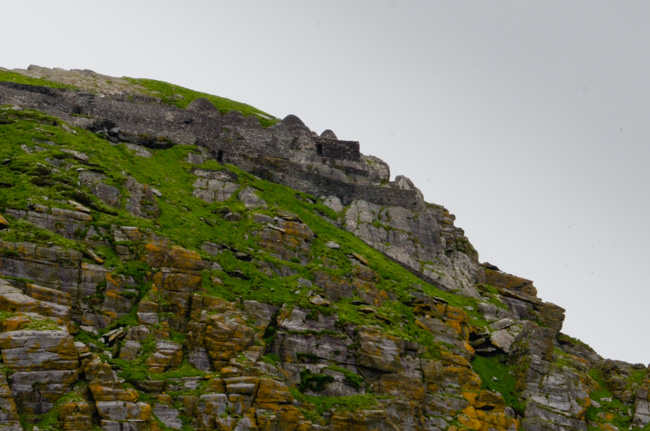
After our visit, we cruised around our original destination. The beehive-shaped stone buildings along the crest of the ridge are the ancient homes of the monks. They have withstood centuries of storm and aging. Our modern buildings should do so well.
We were disappointed to miss this opportunity, but the prospect of climbing (and descending) 600+ uneven rock steps, with no handrails, would have been daunting regardless.
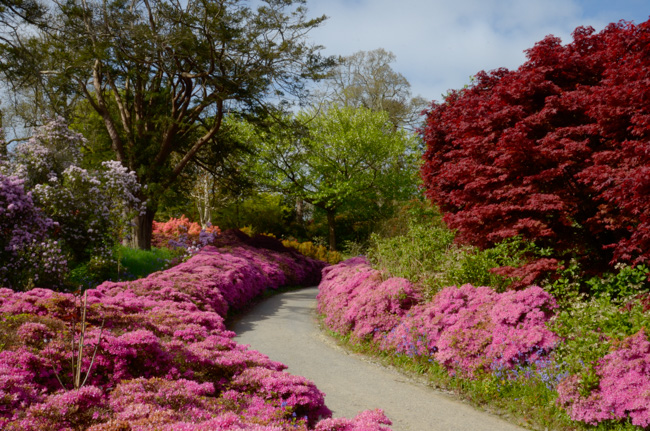
The following morning we had several choices of expeditions. I chose another garden. The Mt. Congreve gardens were designed by the last private owner, Mr. Ambrose Congreve. One of his principles was mass plantings. Not one, not five, not ten, but scores of plants of the same type make a unique visual impact.
We divided into several different groups for our tour and I was lucky to get in the group led by the head gardener.
It was frustrating that few of the plants were labeled, but he said that so many people stole the labels that they gave up replacing them.

After the garden tour we traveled to Waterford. This part of Ireland is, according to Ancestry DNA, where I have my primary genetic roots. I have not been able to document any lines from the area, but my great-great-grandfather was named Sullivan (no O) and may have come from near here. I have a significant amount of Scandinavian DNA and the Viking settlement here dated from the 10th century.
"Stongbow," Richard, the 2nd Earl of Pembroke, and Aoife (EE-fa), the daughter of Dermot MacMurrough, deposed King of Leinster, have quite a tale to tell. In short, in the 12th century, Strongbow, a Norman lord, helped Dermot regain his throne in return for the hand of his daughter. The unintended consequence was that this was the wedge that eventually gave England dominion over Ireland.
That story continues.
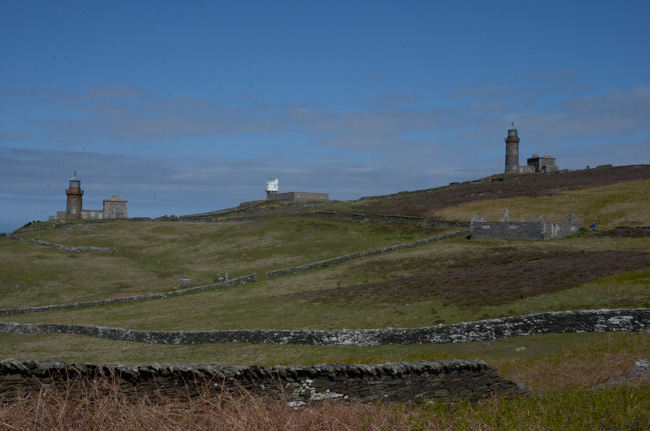
We had been eager to visit the Isle of Man, located in the Irish Sea between Ireland and England, but had never heard of the Calf of Man (this is not an anatomical reference). This small island is noted nowadays for its bird observatory, but at one time it had a community of shepherds and their families. It still has numerous sheep.
These three lighthouses line up with a fourth lighthouse built on a dangerous reef. Captains could tell if they were headed for the reef if the lights lined up. The two beacons on either side are no longer in service. The white beacon is modern and unstaffed.
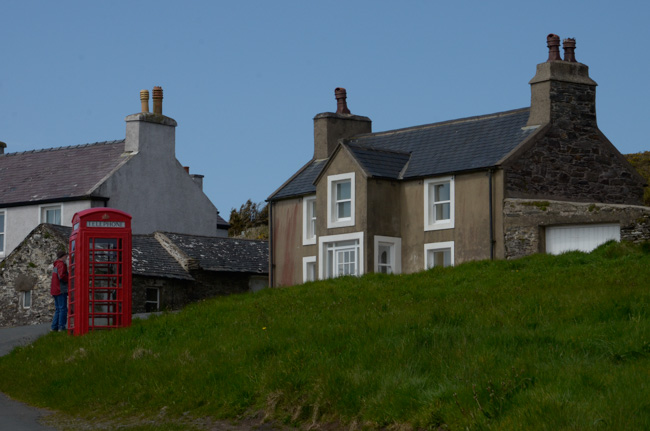
After a morning hiking around the "calf", we cruised to the main island. Man is self-governing and is not considered part of the UK. It is a "Crown dependency" of the sovereign.
In addition to touring this quaint village, we enjoyed a chartered steam train excursion through the countryside. The iconic red telephone boxes are becoming endangered.
Our tour leaders paid attention to every detail. They had even arranged for an ice cream vendor to meet us at the train station!
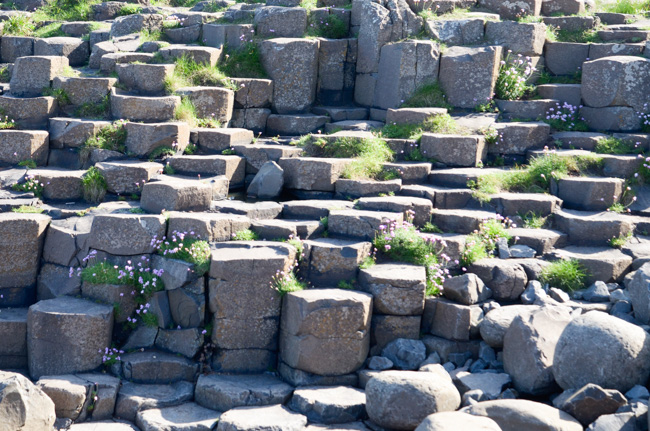
The Giant's Causeway is a basalt formation on the coast of Northern Ireland. The (usually) 6-8 sided columns are similar to columns found on Staffa in the Inner Hebrides and have given rise to the legend of Finn MacCool and his counterpart Scottish giant. The two were said to have built a causeway of columns connecting Ireland and Staffa. In fact, according to our geologist, the columnar formations are not contiguous.
These were not the loveliest rocks in the park. See the detailed pages for more pictures.
This was our last stop in Ireland.
Click your "back" button to return to the previous page or click for our picture album.